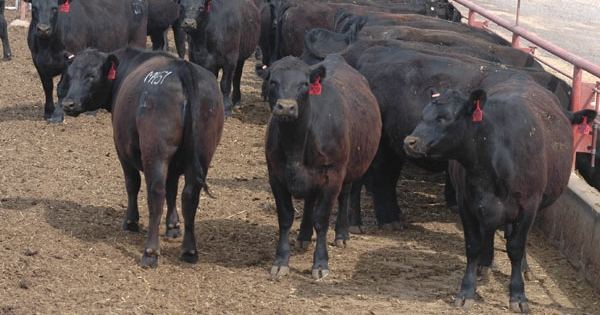I went back down there today to finish laying out some of the working facilities inside their new multi-purpose building/covered arena. All of the spring steers from the Hereford bulls x Brangus cows and Brangus bulls x Hereford cows had all been sold except for 8 born the last of March. Great looking set of black baldies...not a one of them red, but their Brangus are all homozygous black. I am guessing they are gonna weigh 800-900 pounds. I would have asked what the earlier ones weighed, and how much they brought per pound, but there was no one there that would know. These steers will go the sale Monday. They had that herd of reg Herefords and the two reg Hereford bulls in a pasture behind the barns, ready to be picked up by the new owner. Very nice red Herefords in great body condition, seeing as how they had all just weaned 900 lb calves anywhere from 1-4 weeks ago. Someone bought as good a herd of Registered Herefords as I have ever seen. The 2 bulls, 2. The weaned heifers were all together in a pasture, and we drove them down the road ( dirt road) a mile to another one. All black baldies, and no difference between the Br bull x Her cow, or Her bull x Br cow that I could see. The wrangler said you could tell by the ear tag numbers and letters, which was which. He also said that in the past, in his opinion. the heifers with Hereford mommas tended to be gentler than the ones with Brangus mommas. These heifers are all to be sold to the same outfit that are getting the Hereford cows and bulls, so I dunno if we will ever know how they are performing, to compare with these new Brangus x Black Hereford heifers born last month. I don't see how they could look any better. but again, the purpose was to get black baldy replacement heifers that were homozygous for black. Those Brangus x Herefords are 1/2 Hereford, 5/16ths Angus, and 3/16ths Brahma and heterozygous for black. The Brangus x Black Herefords are 1/2 Angus, 5/16ths Hereford, and 3/16ths Brahma, and homozygous for black. This is the exact same as you get when you breed a reg Angus to a reg Braford, a very popular and successful cross down here and points further south, except this cross is 1/2 Angus, 5/16ths Hereford, and 3/16ths Brahma, but heterozygous for black. So, these people may have hit on a niche, with their particular cross being homozygous black.

